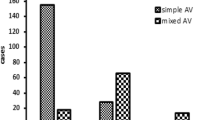Abstract
Background
Herpangina is a common infectious disease in childhood caused by an enterovirus. This consensus is aiming to standardize and improve herpangina prevention and clinical diagnosis.
Methods
The Subspecialty Group of Infectious Diseases, the Society of Pediatric, Chinese Medical Association and Nation Medical Quality Control Center for Infectious Diseases gathered 20 experts to develop the consensus, who are specialized in diagnosis and treatment of herpangina.
Results
The main pathogenic serotypes of herpangina include Coxsackievirus-A, Enterovirus-A and Echovirus. Its diagnosis can be rendered on the basis of history of epidemiology, typical symptoms, characteristic pharyngeal damage and virological tests. The treatment is mainly symptomatic, and incorporates topical oral spray with antiviral drugs. The course of herpangina generally lasts 4–6 days with a good prognosis.
Conclusion
The consensus could provide advices and references for the diagnosis, treatment and management of herpangina in children.

Similar content being viewed by others
References
Chen C. Clinical and epidemiological features of herpangina. Inter J Epidemiol Infect Dis. 2016;43:270–3 (in Chinese).
Jiang DF, Shen KL, Shen Y. Zhu futang practice of pediatrics. 8th ed. Beijing: People’s Medical Publishing House; 2015 (in Chinese).
Li JM, Li L, Gao L, Dong XC, Liu H. Characteristics of herpangina epidemic and related environmental impact factors in Tianjin. J Environ Health. 2018;35:326–9 (in Chinese).
Li W, Gao HH, Zhang Q, Liu YJ, Tao R, Cheng YP, et al. Large outbreak of herpangina in children caused by enterovirus in summer of 2015 in Hangzhou China. Sci Rep. 2016;6:35388.
Peng Q, Xie MY, Zhang YH, Liu Q, Li WR, Li SP, et al. Molecular epidemiology of the enteroviruses associated with hand, foot and mouth disease/herpangina in Dongguan, China, 2015. Arch Virol. 2016;161:3463–71.
Yao X, Bian LL, Lu WW, Li JX, Mao QY, Wang YP, et al. Epidemiological and etiological characteristics of herpangina and hand foot mouth diseases in Jiangsu, China, 2013–2014. Hum Vaccin Immunother. 2017;13:823–30.
Zeng HR, Zheng HY, Liu L, Lu J, Tan XH, Sun LM, et al. Etiological characteristics of herpangina cases in Guangzhou city in Guangdong province, 2015. Chin J Exp Clin Virol. 2017;31:409–13 (in Chinese).
Puenpa J, Mauleekoonphairoj J, Linsuwanon P, et al. Prevalenceand characterization of enterovirus infections among pediatric patients with hand foot mouth disease, herpangina and influenzalike illness in Thailand, 2012. PLoS One. 2014;906:9888.
Li XW, Ni X, Qian SY, Wang Q, Jiang RM, Xu WB, et al. Chinese guidelines for the diagnosis and treatment of hand, foot and mouth disease (2018 edition). World J Pediatr. 2018;36:257–63.
Wang WP, Sun K, Chang LW. Pediatrics. In: Qu SQ, editor. Acute upper respiratory infection. 9th ed. Beijing: People’s Medical Publishing House; 2018. p. 240–2 (in Chinese).
Takechi M, Fukushima W, Nakano T, Inui1 M, Ohfuji S, Kase T, et al. Nationwide Survey of Pediatric inpatients with hand, foot, and mouth disease, herpangina, and associated complications during an epidemic period in Japan: estimated number of hospitalized patients and factors associated with severe cases. J Epidemiol; 2018.
Deng HL, Jiang RM, Li XW, Qian SY, Wang Q, Chen Q, et al. Differential diagnosis of hand-foot-mouth disease. Chin J Clin. 2018;46:760–3 (in Chinese).
Lin H, Huang L, Zhou J, Lin KC, Wang HJ, Xue X, et al. Efficacy and safety of interferon-α2b spray in the treatment of hand, foot, and mouth disease: a multicenter, randomized, double-blind trial. Arch Virol. 2016;161:1–8.
Yao TX, Liao YN, Gu F, Yu SJ, Yin F. Clinical effect of recombinant human interferon α-2b spray on herpangina in children. Chin Pediatr Integr Tradit West Med. 2017;9:427–9 (in Chinese).
Mangan NE, Fung KY. Type I interferons in regulation of mucosal immunity. Immunol Cell Biol. 2012;90:510–9.
Acknowledgements
The Chinese version of this Expert consensus was published in the March issue of Chin J Pediatr in 2019.
Funding
None.
Author information
Authors and Affiliations
Contributions
All the other authors confirmed the final version of the consensus. HY chief trial. HY and XWL chief editor. QBL, RMJ, HLD, GL deputy chief editor. YZY, XDL secretry. Committee members (Ranking in alphabetical order according to last name): BQC, YC, YHC, HLD, JKD, JHH, RMJ, XWL, AWL, CSL, GL, QBL, RPL, GMN, ZBS, JZW, XDW, YZY, HY, YXZ.
Corresponding author
Ethics declarations
Conflict of interest
No financial or nonfinancial benefits have been received or will be received from any party related directly or indirectly to the subject of this article.
Additional information
Publisher's Note
Springer Nature remains neutral with regard to jurisdictional claims in published maps and institutional affiliations.
Rights and permissions
About this article
Cite this article
Yu, H., Li, XW., Liu, QB. et al. Diagnosis and treatment of herpangina: Chinese expert consensus. World J Pediatr 16, 129–134 (2020). https://doi.org/10.1007/s12519-019-00277-9
Received:
Accepted:
Published:
Issue Date:
DOI: https://doi.org/10.1007/s12519-019-00277-9




